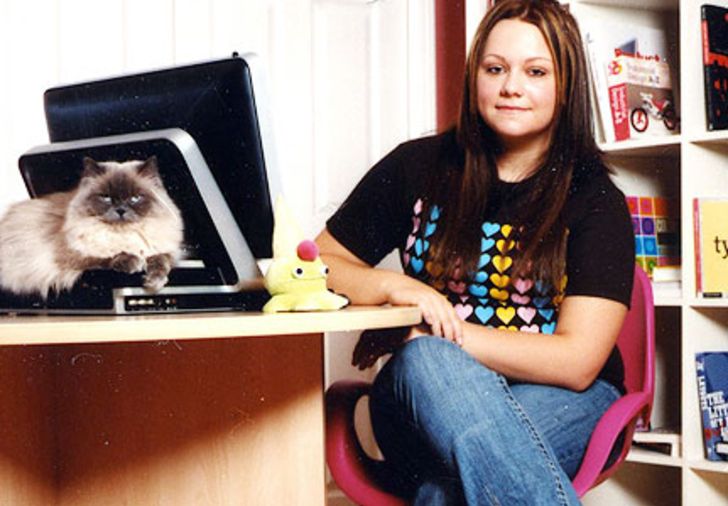I love auto-biographies. From The Autobiography of Ben Franklin to Bossy Pants by Tina Fey, I consume them regularly. However, I’ve found that the best use of biographical material is when I find actionable information that I can put into play in my own life.
One of the best stories I’ve read about taking life experience and translating it to an actionable career philosophy came from Taylor Pearson’s The End of Jobs. Based on his life experience he’s concluded that, contrary to conventional wisdom, entrepreneurship is no longer as risky as it was a few decades ago. In fact, expecting the traditional corporate career path to plod ahead with nothing else to rely on may be far less safe.
Here’s my favorite quote from the book:
“Entrepreneurship is connecting, creating, and inventing systems— be they businesses, people, ideas, or processes. A job is an act of following the operating system someone else created.”
Connecting, creating, and inventing new systems are definitely important skills if you want to start your own business. However, something we suggest at Praxis is to take the entrepreneurial mindset and apply that to the roles you earn at high growth startups.
This allows you to gain a ton of practical experience and knowledge. Additionally, it balances the high upside potential of entrepreneurship with the security of employment.
With that in mind, it’s useful to explore the principles and strategies that some of my favorite young entrepreneurs used to grow their first businesses. We’ll then be able to think about how we can apply these principles when we’re looking for our first job or career opportunity.
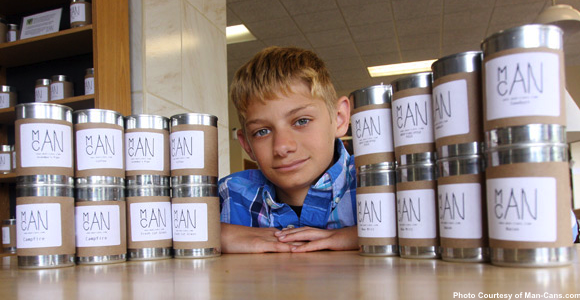
1. How Hart Main Built a Unique Candle Product
In the fall of 2010, at the age of 13, Hart started ManCans, a company that focuses on selling candles with scents that would appeal to men.
The original design was quite different than what you see with a normal candle. All of the candles were made inside a recycled soup can. Hart began by donating some soup cans to soup kitchens and homeless shelters across Ohio, Pennsylvania, Michigan, and into West Virginia. After they were eaten, the shelters recycled the cans and Hart repurposed them as candles. Today the candles are made inside of manufactured soup cans, and a portion of the profit is donated to the shelters.
Since the beginning of the business Hart has been able to donate 90,000 cans of soup along with $30,000, and he has expanded his line of products.
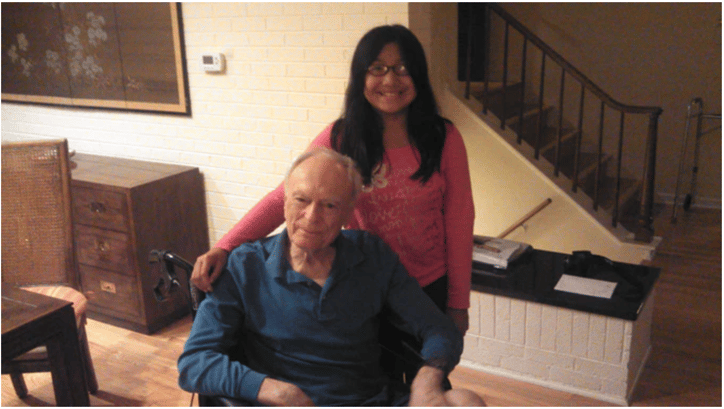
2. How Lily Born helped her Grandpa
When Lily Born was 7, she noticed that her grandpa, diagnosed with Parkinson’s Disease, was always knocking over his cup. Inspired to help her Grandma cut down on cleaning up the spills she came up with a prototype for the kangaroo cup. It’s a three-legged cup that won’t tip over. Now a seasoned 16-year-old, she has raised over $62,000 on Kickstarter and sold thousands of cups across the world.
-
What can we learn from Hart and Lily?
Both Hart and Lily show us how developing a unique selling proposition (USP) can help set a product apart in the market place. A unique selling proposition is a unique benefit a company, service, product or brand has that makes it stand out. Typically, a unique selling proposition is a feature that highlights the benefits of a product that is most meaningful to the customer.
To incorporate this knowledge in your own life answer these questions and tweet us your responses! What is one of your favorite products? What problem does it solve? What are some unique ways that a new product could solve this issue?
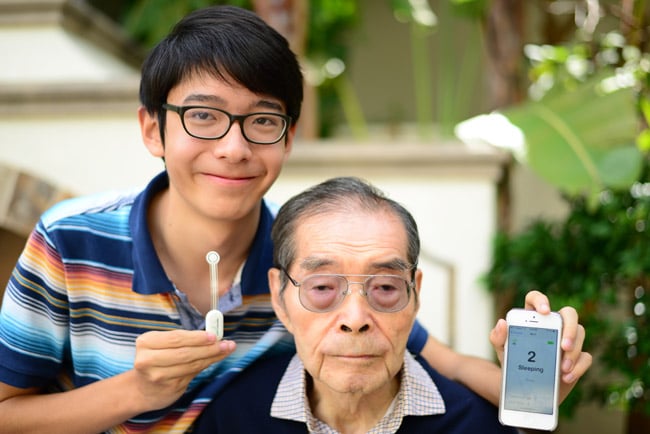
3. How Kenneth Shinozuka solved a major problem for Alzheimer
As Kenneth Shinozuka watched his grandfather battle Alzheimer’s disease and his family struggle as caretakers, the wheels in his head started spinning. Troubled by the nighttime wandering that is a common symptom of the disease, he invented the SafeWander sensor, a film-thin device attached to the bottom of the foot that sends a notification through an app when an increase in pressure is detected, such as when the wearer wakes up in the middle of the night. After the initial success of the product, he formed SensaRx, a startup that works on spreading the SafeWander to families who need it the most.

4. Garett Gee’s trend-spotting earned millions in funding
Garrett Gee turned an insight into the future into a successful business opportunity when the iPad 2 was about to come out. Garret guessed that once the iPad 2 came out, there would soon be a blog post somewhere listing the top 10 apps for the device. After recognizing there should be easier QR code software for the iPad, he made it his mission to be the first one to offer such a product. After two sleepless nights of IOS development, he had accomplished his goal. His guess about the blog post was also correct and the app made it on to the list. He then developed the startup Scan and the team raised $1.5 million from venture capitalists, including Google Ventures. In the first year live on the App Store Scan earned 10 million downloads.
-
What can we learn from Kenneth Shinozuka and Garret?
Earlier in this post, we talked about risk and how, paradoxically, one of the riskiest things to do in your career is to refuse to take any risks. Any time you attempt to create a new system by connecting new things or inventing something new altogether there is always a chance it won’t work out. Both of them noticed a problem and built something without the certainty that the new solution would catch on. However, they realized having something tangible and concrete is the only way for a new product to get off the ground. They risked their time, resources, and energy to create that tangible solution and reaped the benefits.
To incorporate this knowledge in your own life answer these questions and tweet us your responses! What is a recurring problem that you see appearing in your life or community? How could a product or app solve that problem? What is the most simple possible version of that product or app that you could finish in a month?
5. How Ashley Qualls transformed 8 dollars and her artistic skills into a viable business
Eight dollars started Qualls’ journey that has led her to $70,000 per month in revenue. When an early social media site called MySpace was popular, people complimented Qualls on her MySpace page designs. She posted the designs online for people to purchase and that propelled her to a $70,000 per month revenue with seven million monthly visitors. She made so much money that she dropped out of school to devote her time to her business.
-
What can we learn from Ashley?
Ashley teaches us how we can make our turn our unique skills and talents into a product. In short, a product is a self-contained unit of economic value. She first created something the people wanted. Then, she produced it as inexpensively as possible.
To incorporate this knowledge in your own life answer these questions and tweet us your responses! What are some of the most common compliments you receive? What are your favorite hobbies and sources of entertainment? How can you bring these two things together and create a new product?
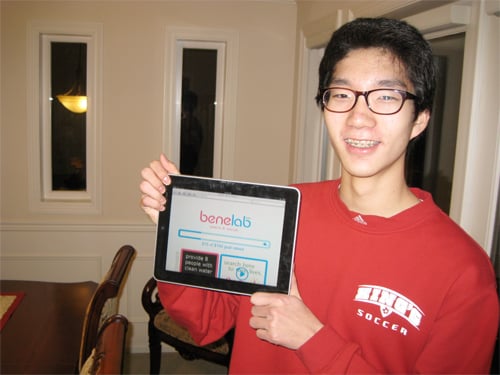
6. Jack Kim creates a philanthropic search engine
Jack Kim is a Seattle teenager that founded Benelab, a search engine that generates donations. Kim became obsessed with how search engines work and he learned the power of a search engine in generating revenue from small amounts of traffic. The mission of Benelab is “to make philanthropy easy and more accessible.”
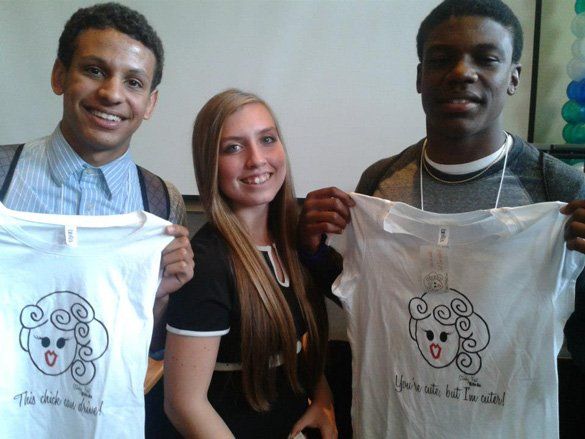
7. How Asya Gonzalez went from notebook doodles to a popular brand
Stinky Feet Gurlz was established in 2011 by then 14-year-old designer Asya Gonzalez. What started out as a simple doodle in a notebook, evolved into a variety of characters that were part of a clothing brand. Asya leveraged her art skills into a brand that was successful enough to fund a foundation called She is Worth it!
-
What can we learn from Jack and Asa?
Every business is limited by the size and quality of the market it attempts to serve. This is called the iron law of the market. Fundamentally, if you don’t have a large group of people who really want what you have to offer, your chances of building a viable business are very slim.
The best approach is to focus on making things people want to buy. Creating something no one wants is a waste. Both Jack and Asa accomplished incredible things with their products, but neither of these projects appears to be active. While both have gone on to do incredible things, I chose these less successful projects to illustrate this point. Sometimes things don’t work out. This is not a reflection on our ability or competency, but the fundamental reality of the market.
When we can learn to take failure less as a personal indictment of our self worth and more as a fantastic opportunity to gain valuable data for what comes next we’ve developed a crucial skill. This skill takes us to a place where we can take risks and use setbacks as a stepping stone for greater flourishing.
To incorporate this knowledge in your own life answer these questions and tweet us your responses! Why do you think these projects didn’t work out? How would you tweak their products based on the iron law of the market?
Are you a young entrepreneur with high ambitions? We want to hear your story! Email me your story and I’ll send you a free book.
March 20, 2020
